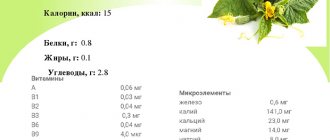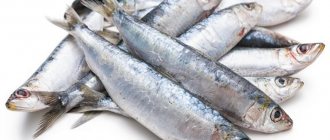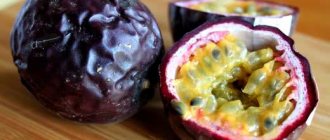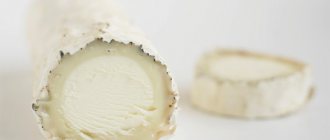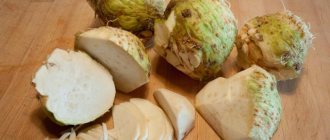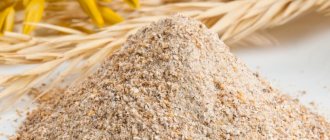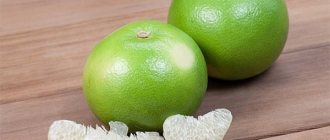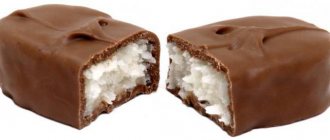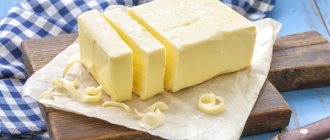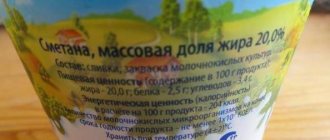People have been making cheese for thousands of years. There are many legends about the origin of this product. Some talk about the “divine” gift of Artemis, the patroness of hunters and fertility, and Aristaeus, the son of Apollo. Others consider the nomadic Arabs to be the inventors: they stored dairy products in the stomachs of animals. Such a “vessel” contained the remains of rennet enzymes, the interaction with which transformed ordinary milk into a new, magnificent type of food.
Be that as it may, in fact, today this product is included in the diet of almost any person. However, its quality began to undergo significant changes. What is a cheese product and how does it differ from cheese? How to choose the right cheese? What is the difference between the different types, and how not to buy a counterfeit?
Composition of real cheese
Classic cheese must contain milk (goat, sheep or cow), a coagulating component and salt. Depending on the type of coagulant, the following types of cheeses are distinguished:
Rennet. The coagulating substances are enzymes: pepsin, chymosin. Due to different production technologies, cheeses of this type are hard, soft and brine.
The first two subspecies are initially produced using standard cheese-making technology. Then future durum varieties are squeezed out as much as possible, pressed and exposed to ripening, during which the remaining moisture will gradually evaporate. The most popular are Parmesan, Gouda, Maasdam, Manchego, Russian and Dutch cheeses.
Soft varieties have a fairly high moisture content from 50 to 65%. These include: Roquefort, Dorogobuzh, Camembert.
Brine varieties differ in that ripening occurs in brine. Feta, fetax, feta cheese, mozzarella, chechil (popularly called braid) - all these are representatives of this subspecies.
Fermented milk. Here, fermented milk starter acts as a coagulant. In such conditions, Adyghe cheese, shabziger and many others are made.
By combining rennet and starter culture, a combined form is obtained. This includes, for example, Lithuanian cheese.
Serum. During the curdling process of milk, casein protein is formed, which when curdled produces whey containing albumin. The latter coagulates at a higher temperature. Such manipulations make it possible to obtain new types: ricotta, brunost.
To create a rich assortment, cheeses are subjected to multi-stage processing. As a result, smoked and melted varieties appeared.
People often mistakenly think that if cheese has been melted, it is not natural. However, according to GOST, the basis of this product is cottage cheese or rennet cheese. For example, the Druzhba cheese curd contains both cheese and cottage cheese, and its mass fraction of fat is 55%, which meets the standards.
Preparation
1. Normalization of milk
To obtain the standard fat content of Russian cheese (50.0±1.6)%, milk must be normalized. Whole milk results in a certain fat content, taking into account the protein content.
Formulas for normalization are clearly presented in specialized literature on cheese making - “Cheesemaker's Handbook”, author V.Ya. Lyakh.
At home, you need to understand that whole milk from a cow is quite fatty (from 3.5% - 4.5%) and when produced from such milk, cheese simply will not meet the characteristics. The fat content of milk for the production of Russian cheese should be at the level of 2.7-3%.
Therefore, one of the available ways to carry out normalization is the use of a separator, which can easily produce cream and skim milk. Whole milk is then mixed with skim milk and cream, adjusting the fat content. To reduce the fat content, whole milk is mixed with skim milk, and to increase it with cream.
If a separator is not at hand, the fat content of the milk can be reduced by conventional cold treatment. To do this, just put the whole milk in the refrigerator and after a day you can skim off the floating cream with a ladle/scoop. The fat content of the milk will drop by about 1%.
Let's proceed directly to preparation.
2. Pasteurization: heat the milk to 72℃ - hold for 20 seconds.

3. Cool the milk to the temperature for introducing the starter culture - 32℃.
4. Add a solution of calcium chloride (pre-dissolve the sample in distilled water or a ready-made solution from the pharmacy). Mix the milk thoroughly.

5. For Russian cheese, a starter culture with high acid-forming ability is required. A suitable option would be to use Danisco MM101 culture.
Using a high-precision scale, measure the required amount of culture and sprinkle it onto the surface of the milk.

6. To add color to the milk, add natural liquid dye Annatto drop by drop. The dosage depends on your color preferences. In our case it was 1 drop per 2 liters.

7. Wait for the acidity of the milk to increase. The acidity of milk before adding the milk-clotting enzyme should be at the level of 20-21oT. For those who do not have the opportunity to measure acidity, its increase after adding culture occurs on average in 1.5-2 hours
8. Upon reaching the required acidity level (after 1.5-2 hours), add milk-clotting enzyme, previously dissolved in distilled water (5-10 minutes before application). Mix thoroughly for 30-40 seconds, then any agitation or stirring of the milk should be avoided, as this may affect the quality of the curd.

The advantage of tableted enzyme is the convenience of dosing.
Thanks to the dividing lines provided by the manufacturer, each tablet can be easily divided into 4 parts. 1 tablet is designed to roll 20 liters. milk.
9. Determine the flocculation point using the rotating vessel method (detailed methods are described on our website in the article “Coagulation and Flocculation”).
Cartoonist 3
The approximate time from adding the enzyme to cutting the curd (coagulation time) is 36-45 minutes, provided that the dosage of rennet ensures a flocculation point of 12-15 minutes.

10. Check the readiness of the cheese curd for slicing using the clean fracture method. To do this, use a cheese spatula, knife or something similar to cut the curd vertically (2-3 cm is enough) and lift it horizontally. The corners of the clot should be sharp, the serum should stand out transparent.

11. Using a special knife or a raw lyre, cut the curd into cubes with a side of 7-10 mm, first horizontally, after 5 minutes vertically.

12. At the initial stage after slicing, the grain is soft and must be carefully kneaded so that the grain becomes stronger. It should become denser, elastic and rounded.
At the same time, serum acidity is monitored. During the normal course of the lactic acid process, the increase in whey acidity from the moment of cutting the curd to the second heating is 1-2oT.
13. Drain off (30 ± 10)% of the whey (of the amount of mixture being processed).

14. Set the second heating temperature from 41 to 43℃. Heating duration (30±10) min.
15. The duration of kneading after the second heating depends on the properties of the cheese grain. Once finished, the grain is checked to see if it is ready for shaping by squeezing it in the palm of your hand. It should stick together and, when rubbed between your palms, crumble into small components of the cheese grain. The grain should also be of a dense consistency and slightly squeaky on the teeth.

16. After kneading, pour off another (25±5)% of the whey from the remaining volume.

In the normal course of the lactic acid process, the duration of grain processing after the second heating should be (40±10) minutes. The total duration of grain processing from the moment of cutting the clot (140±20) min.
17. Partial salting in grain.
Table salt is added to the cheese grain with the remaining whey at the rate of (50±20) g of salt per 10 liters of original milk. After adding it, the grain is kneaded for another (20±5) minutes.

For large volumes of processing, it is advisable to add salt in the form of a saline solution.
What is the difference between cheese and cheese product?
The differences between a cheese product and cheese are mainly in its composition.
A product containing more than half of fats of animal origin can be called cheese, and the rest should be called a cheese product. The profitability of the latter is many times higher than the original. Therefore, manufacturers think: why bother? - Cheese will work out that way. How then to distinguish real cheese from a cheese product? In view of such events, the consumer simply needs to pay attention to:
- Compound. Vegetable fats should not be included in the ingredients;
- Price. Real cheese made from whole milk cannot cost less than six hundred rubles, and from dry milk - 450 rubles per kilogram! There is no separate technical regulation for mandatory designation of the dry component.
- Marking. The manufacturer must indicate on the front side of the package a name that corresponds to the composition of the contents.
- Appearance. Color – uniform, dim. Large holes in the middle of the head and small ones at the edges are a sign of counterfeit.
Cheeses Vkusnoteevo
Cheese is a tasty and healthy dairy product made from whole milk. It contains a large amount of vital minerals, essential amino acids and vitamins. Several varieties of hard cheeses are produced under the Vkusnoteevo brand. Vkusnoteevo cheeses are distinguished by their pleasant taste and high-quality composition.
Russian cheese
Russian cheese “Vkusnoteevo” has a relatively low fat content and can be recommended for dietary nutrition. It contains:
- whole cow's milk;
- rennet extract;
- calcium chloride;
- leaven;
- salt.
The calorie content of this product is 354 kcal. It is rich in valuable animal protein, calcium and phosphorus. The price of this product is about 500 rubles per kilogram.
Aged Russian cheese
One of the new varieties of Russian cheese “Vkusnoteevo” is aged cheese. It is made according to a special recipe. For a more refined taste, this product is packaged in a special latex shell, due to which it matures and acquires special qualities.
This type of product is prepared according to the same recipe as Russian cheese. The main difference is a slightly higher fat and calorie content, as well as special production conditions under which it ripens for 60 days.
Consumer reviews rate the aged version of Russian cheese lower than its classic version. According to reviews, buyers note a number of shortcomings.
- Uneven product color.
- Dry top crust.
- The shell is too tight and difficult to remove.
According to consumer ratings, both types of cheese are suitable for hot consumption, such as in casseroles or pies.
Cream cheese
Cream cheese of the Vkusnoteevo brand has a delicate taste and rich composition. It is made from:
- normalized milk;
- lactic acid starter;
- enzyme preparation;
- calcium chloride.
Sodium nitrate is used as a preservative for this product. Natural annatto extract is used as a dye.
The fat content of this type of cheese is 45%, and the calorie content is 330 kcal. The price ranges from 500 to 650 rubles per kilogram.
Customer reviews note such product qualities as:
- delicate taste;
- natural composition;
- pleasant consistency.
In addition to taste, buyers also note the convenience of packaging - it is a bag made of dense polyethylene.
Roskontrol is currently conducting an independent review of this product.
Cheese Tilsiter
Tilsiter Premium cheese has low fat content - 45% and calorie content - 329 kcal.
Tilsiter cheese contains:
- milk;
- enzyme preparation of animal origin;
- natural dye;
- preservative;
- salt;
- leaven.
This product has received many positive reviews from consumers who note a number of advantages of the product.
- Pleasant taste.
- The predominance of natural products in the composition.
- The use of natural dye, annatto extract, which is not harmful to health.
- Convenient packaging in which the cheese is stored for a long time.
The only drawback noted by consumers is the presence of sodium nitrate in the cheese recipe. According to a review from one of the buyers, this substance has an adverse effect on health.
Tilsiter cheese of the Vkusnoteevo brand belongs to the products of the middle price category. A package of 200 grams can be purchased at a price of 145 rubles.
Cheese Kalacheevsky
Kalacheevsky Vkusnoteevo cheese is made according to a traditional recipe. It does not contain any flavoring additives. In addition to whole milk, it contains:
- starter of mesophilic microorganisms;
- enzyme preparation for coagulating milk of animal origin;
- sodium nitrogen preservative;
- preservative E-235.
This type of product belongs to semi-hard cheeses. Its fat content is 45%, and its calorie content is 353 kcal.
Consumer reviews of this product are mostly positive. The only drawback of the cheese, according to buyers, is the presence of two types of preservatives.
In general, the reviews note the following qualities of the product:
- creamy taste;
- quality composition;
- natural ingredients in the recipe;
- long shelf life;
- the ability to purchase goods in different packages, as well as by weight.
A 310 gram package of Kalacheevsky cheese can be purchased at a price of 250 rubles.
According to the manufacturer’s recommendations, as well as reviews, Vkusnoteevo cheeses can be used to prepare dishes such as:
- sandwiches;
- salads;
- hot and cold snacks.
All types of cheese under consideration are also used when baking meat, fish or vegetables.
Benefits and harms
We found out what it is - a cheese product, but what are its benefits and harms. You shouldn’t expect any positive effects from this dish: vegetable fats are the main component of pseudo-cheese. Palm, coconut and rapeseed oils are dangerous because they are converted into transgenic fats. Due to this, metabolism is disrupted, blood clots form, cholesterol increases and there is a risk of cardiovascular diseases. A bunch of not-so-pleasant diseases are what the cheese product is made from.
Consumption of real cheese has a beneficial effect on our body and brings invaluable benefits to it. Proteins, vitamins B, A, E, D, as well as calcium and phosphorus improve the structure of bone tissue, form strong and healthy teeth, help the functioning of the nervous system and participate in digestion processes. Cheese is a source of methionine and tryptophan, which are involved in maintaining water balance. One of the most valuable components of this unique dish is linoleic acid. Laboratory studies have confirmed that people who received sufficient amounts of this fatty acid did not subsequently suffer from diabetes, atherosclerosis and obesity.
So, we have learned what a cheese product and cheese are, the differences of which are described above. Cheese cannot contain vegetable oils. But counterfeit cheese is extremely harmful to our health, and if we want to protect ourselves and our loved ones from “such happiness,” then when purchasing in a store, carefully study the label, markings, composition and appearance. Be healthy and eat only quality products!
Useful properties of hard cheese
Cheeses are very rich in proteins. Thus, 70 grams of some cheeses contain the same amount of protein as 100 grams of meat and 100 grams of fish. Some of the most dietary cheeses that we sell are Brynza, Mozzarella, Brie, Feta. Their calorie content ranges from 300 calories. And the phosphoric acid contained in cheese is called nothing less than “the main driver of the chemical reactions of all cells.” Cheeses are divided into two main groups: hard and soft. Hard cheeses, in turn, are divided into small, large and rindless. Hard large cheeses include such types as: Carpathian, Swiss, Sovetsky and Altai. Such cheeses have a delicate aroma and sweetish taste, and large eyes are clearly visible on their cut. It is most beneficial to eat cheeses in the morning, but without butter and bread; you can also eat them during lunch, especially after the main courses. So, a piece of this product restores the acid-base balance in the mouth. Mild groups of cheeses: Altai, Sovetsky and Swiss are even given to almost infants. But we must remember that everything should be in moderation, a little of each good thing. The group of hard small cheeses includes the following: Kostromskoy, Gollandsky, Stepnoy, Yaroslavsky, Uglichsky and Stanislavsky. Of course, you have ever tried ripened cheese; it is difficult not to distinguish it from other cheeses, thanks to the acquired pungent taste and aroma. Such cheeses are ideal for breakfast, and they are also used as a seasoning for vegetables, pasta, or simply melted on bread.
Cheese promotes digestion and longevity
Cheese is one of the most delicious and nutritious foods in our diet. So, 500 grams of cheese contain the same amount of calcium as 5 liters of milk. In addition, it is a source of vitamin A, which is known to prolong youth and longevity. They even say that Queen Semiramis maintained her beauty thanks to this product. Just 70 grams of cheese replenishes your daily calcium requirement. In addition, cheese contains 8 amino acids that our body needs, but cannot synthesize on its own. Hard cheeses restore the body after prolonged colds and operations, and also improve digestion, skin condition, and have a positive effect on vision, however, along with nutritional value, they have their drawbacks. For example, people with high cholesterol levels should not eat fatty cheeses. Among the contraindications are kidney and pancreas diseases. Cheese fat is not healthy fat, it is fat of animal origin, it is harmful to the heart and blood vessels, so people with heart disease and patients with atherosclerosis are also not recommended to overuse cheese. You need to be careful when consuming this mold product. It causes allergies in children, and in pregnant women there are problems with the development of the child. Spicy cheeses should be eaten in limited quantities if you have stomach diseases or hypertension. To choose a truly high-quality and nutritious one, you should pay attention to the packaging; the inscription “cheese product” indicates the presence of impurities and preservatives. If milk protein is replaced with soy protein, it feels like cheese is crumbling in your mouth. Cheese needs a mold. In addition to giving a beautiful appearance, the shape is an important technological tool. For example, in molds for soft and pickled cheeses, a process of self-pressing of the cheese grain occurs when the whey drains out. And for hard cheeses, industrial molds made of durable material are used, because... here the process of forced pressing is already used. If we talk about polypropylene molds, then for hard cheeses their walls are much thicker. If you have not yet become a cheese maker, then perhaps this article will encourage you to do so, because cheese making is an entire art that will live forever.
Author © 2013 Alexander Lebedev
All articles about the food industry All equipment for the food industry

